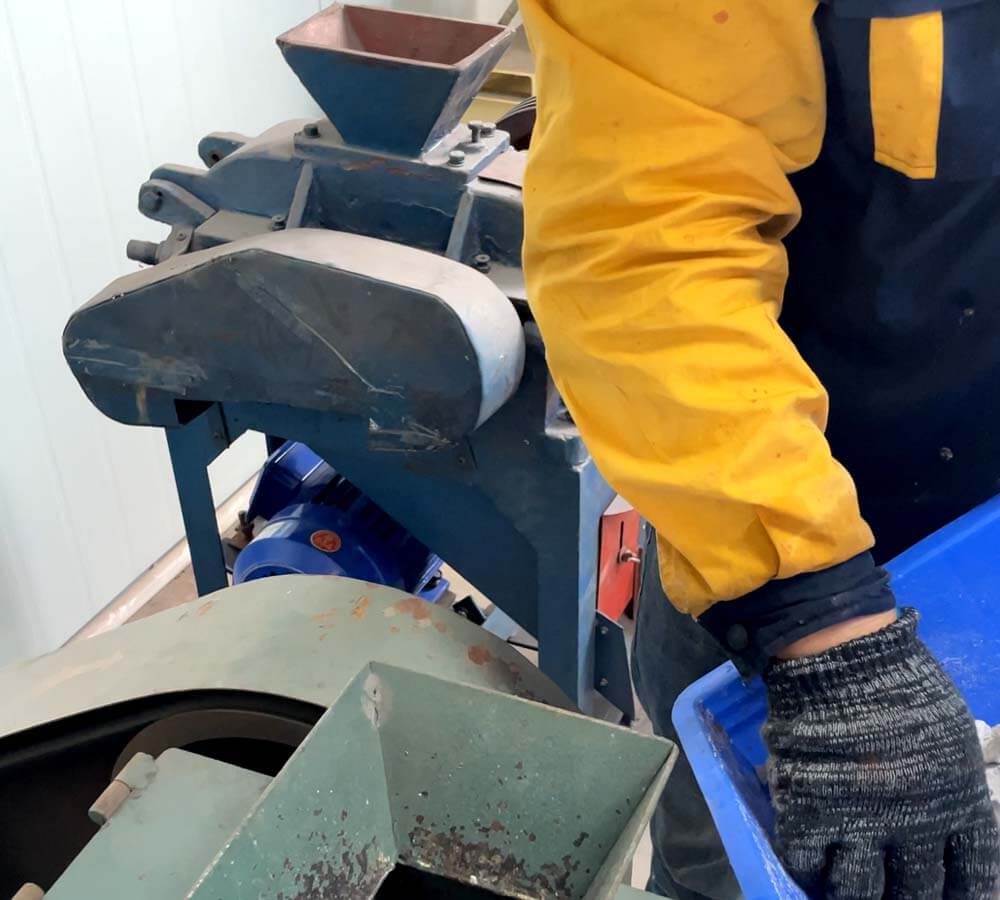When operating a laboratory rock crusher, it is crucial to prioritize safety. Correct operating procedures can minimize the risk of accidents and injuries while ensuring optimal performance. An important safety measure is always to wear protective equipment such as goggles, gloves, and lab coats.
These items form a barrier between potential hazards and your body, protecting you from flying debris or chemical splash. Safety should always be a top priority when operating a laboratory rock crusher.

Laboratory rock crusher
Laboratory rock crushers are essential tools in various research and analytical applications. They are used to crush, grind or pulverize rocks and minerals to prepare samples for analysis. We currently have several different types of laboratory rock crushers, each with its unique features and benefits.
1. Laboratory jaw crusher:
It is usually used to break large rocks into smaller pieces. The machine has a fixed and movable jaw, between which the material is crushed. Jaw crushers produce fine particles efficiently because they break rock between two vertically oriented jaws, creating a V-shaped gap.
2. Laboratory hammer crusher:
Its distinguishing feature is an adjustable crushing chamber that allows precise control of the particle size produced. Designed with durability, they are typically constructed from high-grade stainless steel or hardened steel components to withstand continued use in a laboratory environment.
3. Laboratory laboratory roller crusher
Adjustable gaps between rollers allow users to control product size and create uniform samples. Its compact size ensures it fits nicely into tight spaces without compromising performance.
Whether using a jaw crusher to produce fine particles or an impact crusher to reduce size effectively, the machine’s safety procedures must be followed correctly.
Safety Instructions for Laboratory Rock Crusher
Safety should always be a top priority when operating a laboratory rock crusher. These powerful machines break and grind rocks and minerals into smaller particles, but can cause serious injury if not handled carefully. Here are some basic safety instructions to keep in mind:
- Familiarize yourself with the machine: Before using the rock crusher, take the time to understand its functions and operating procedures. Read the instruction manual carefully and seek guidance if needed.
- Personal Protective Equipment (PPE): Always wear appropriate PPE when operating a rock crusher. This may include safety glasses, gloves, ear protection and steel-toed boots.
- Clean work area: Make enough space around the machine for easy access and movement. Remove any obstructions or debris that may interfere with safe operation.
- Maintenance inspections: Regularly inspect the rock crusher for any signs of damage or wear that may affect its performance or pose a safety risk. If you have any problems, please solve them in time or contact professional technicians.
- Correct loading skills: When adding rocks to the crusher hopper, it should be done slowly and steadily to prevent overloading or jamming of materials.
- Keep your hands clear: Never put your hands near moving parts or inside the crushing chamber while the machine runs.
- Emergency Stop Button: Become familiar with the location of the emergency stop button on your specific rock crusher model and know how to use it quickly, just in case.
Laboratory rock crusher operating steps
By following these four steps—setting it up correctly, ensuring safety measures are in place, feeding rock consistently, and adjusting the jaws as needed—you can maximize efficiency and get accurate results in your crushing process.
First, ensure the crusher is set up correctly, adjusting the jaw gap to the size required to crush the material. This can be done by loosening and tightening the handwheels on both sides of the crusher.
Next, before starting the crusher, ensure all safety equipment is in place and functioning correctly. This includes wearing appropriate personal protective equipment such as gloves, safety glasses and ear protection.
Also, ensure the emergency stop button is easy to operate in case of any accidents or malfunctions.
You can start operating the rock crusher once everything is ready and safety measures are in place. Feed rocks into the hopper slowly and consistently to avoid overloading or clogging the machine. Depending on the material size you need to crush, use an Allen wrench to adjust the jaws accordingly to reduce or increase pressure.
Before using your rock crusher, inspect it for any damage or wear that could affect its performance or create a hazard. Check all electrical connections and ensure they are tight to prevent any electrical accidents. Keep the area around the rock crusher clean and clutter-free to avoid tripping or falling accidents. Proper implementation of safe operating procedures ensures personal protection and helps maintain the service life of your laboratory rock crusher. Asia and Africa International has over thirty years of experience in producing mineral/rock crushers; contact us for high-quality equipment and comprehensive mineral testing services.
